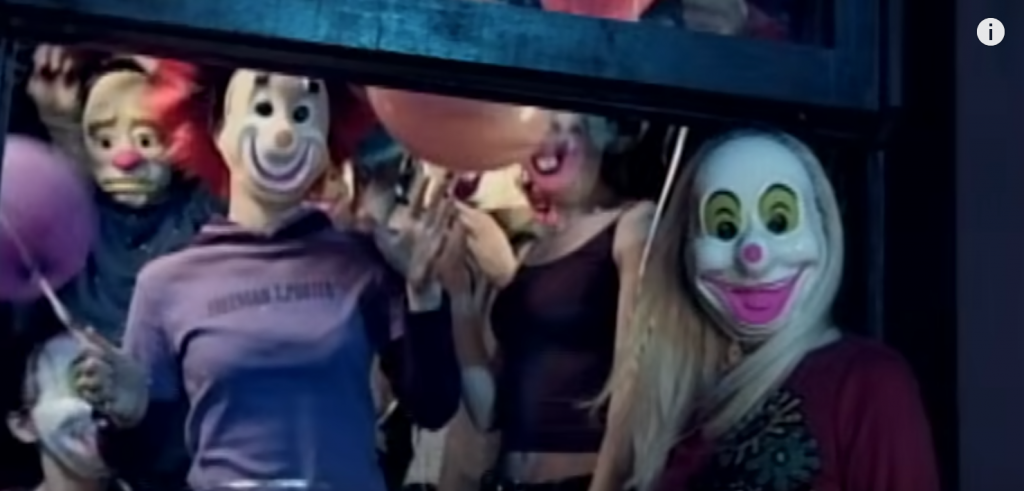Evanescence is one of the bands that created the foundation for what is now referred to as “gothic rock.” Coincidentally, it’s also one of the only bands that can make me feel like I’m still 13 years old and no one will ever understand me. I’m not the only person that feels this way, though. The Youtube comments on the music video for “Bring Me To Life” mirror similar sentiments, with one user, Marco Alcocer, commenting “it’s not a phase mom.” Evanescence, through their music and their visual aesthetic, resonated with angsty teens on an incredibly widespread level.
Evanescence first became popular in the early 2000s; largely because their songs sounded unlike pretty much all of the other popular music at the time. Their debut album, “Fallen,” came out in 2003, which, to set the scene for the music landscape, was a year in which the Billboard Top 100 was dominated by upbeat songs like “Crazy in Love,” by Beyonce and “Hey Ya!” by OutKast. None of the tracks on “Fallen,” however, sounded like either of those songs.
The most popular song off the album, “Bring Me To Life,” was even described in terms of its relationship to popular music as the “anti-Britney” by the New York Times. Yes, the music was angsty, but what solidified this song as the goth legend it is today was the way the music was combined with visual elements in the music video. Basically, Evanescence used traditional symbols of the gothic style in the music video, which then reinforced the meaning of the lyrics by giving them a historically recognized aesthetic backing.
The examples of gothic style that Evanescence used here are plentiful, but for the sake of this post, I’ll just examine a few.
The most easily identifiable gothic element in this video is the color palette. For the duration of the video, there are three main colors: black, white, and dark purple/blue. Notably, there are also flashes of red throughout the whole video, which is a quintessential color in the gothic palette. In fact, typing “gothic color palette” into Google yields the following image.
While the colors may not inherently mean anything, they symbolize a kind of inescapable darkness (especially to anyone who’s ever taken a high school English class) that corresponds to the lyrics of the song. One line in particular, ” call my name and save me from the dark,” exemplifies this idea that the singer is in a dark mental space, so it’s very effective visually that her external surroundings are dark as well.
Another, harder to spot gothic element is the inclusion of the grotesque. Many visuals in the gothic style include grotesque or spectral figures. In the music video, it goes by quickly, but there is a scene that includes clown-like, masked figures.

According to Justin Bienvenue, urban gothic (which is the setting of the music video since it takes place in a city during post-industrial society), “is known to put people in horror situations…for an overall dark feel and eerie look.” In this case, it does exactly that. The inclusion of these figures in the music video adds to the overarching feeling that something is not right or is strange in the life/mind of the singer. The fact that they’re masked and not just regular clowns makes it especially creepy, which contributes to the aesthetic of the video overall. Additionally, the speed at which they flash by in the video begs the question of whether they were actually there or creates a “what was that?” effect, which adds to the eeriness of their presence.
Lasting Impressions
In recent years, this song has adopted a new visual medium: the meme. If you didn’t know that this song spurred a popular meme, one scan through the “Bring Me To Life” Youtube comments would fill you in. Youtube user Turnabout Robin commented, “This has become a meme song as of late.” User KR Gaming adds, “I remember listening to this song as a child without thinking of memes…damn.”
The memes in question are similar in format to these:
The move from the music video to memes indicates that the feelings that this song evoked are something that a lot of people look back on with a humorous sort of nostalgia. Basically, we can identify that at one point all of this angst spoke to us, but now we realize that, as much as we hate to admit it, our moms were right, and it was just a phase. As Youtube user The Perfect Gaming Zone put it, “Music is the closest thing we have to a time machine…”








